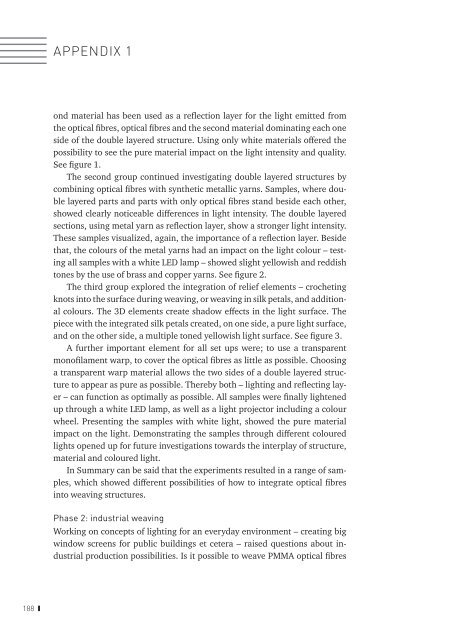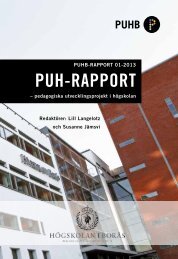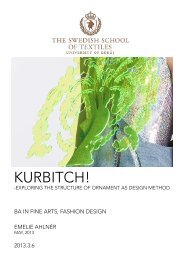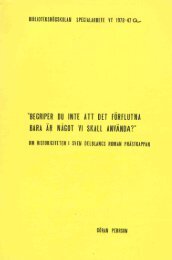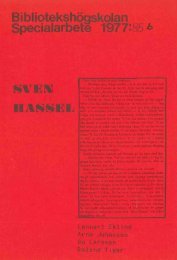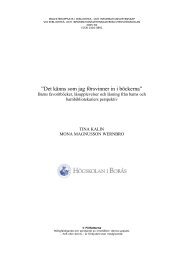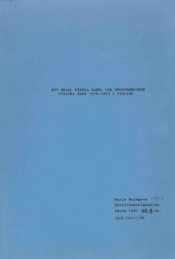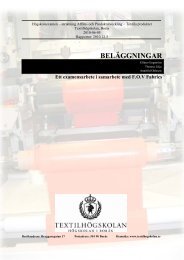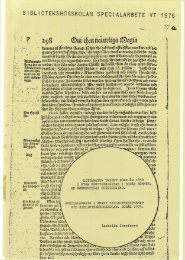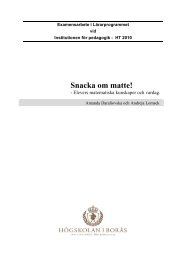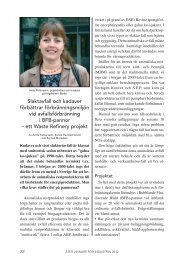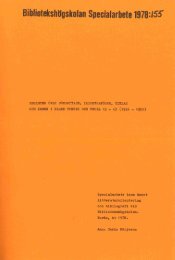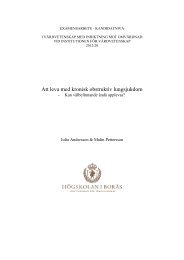barbara jansen - BADA
barbara jansen - BADA
barbara jansen - BADA
You also want an ePaper? Increase the reach of your titles
YUMPU automatically turns print PDFs into web optimized ePapers that Google loves.
appendix 1<br />
ond material has been used as a reflection layer for the light emitted from<br />
the optical fibres, optical fibres and the second material dominating each one<br />
side of the double layered structure. Using only white materials offered the<br />
possibility to see the pure material impact on the light intensity and quality.<br />
See figure 1.<br />
The second group continued investigating double layered structures by<br />
combining optical fibres with synthetic metallic yarns. Samples, where double<br />
layered parts and parts with only optical fibres stand beside each other,<br />
showed clearly noticeable differences in light intensity. The double layered<br />
sections, using metal yarn as reflection layer, show a stronger light intensity.<br />
These samples visualized, again, the importance of a reflection layer. Beside<br />
that, the colours of the metal yarns had an impact on the light colour – testing<br />
all samples with a white LED lamp – showed slight yellowish and reddish<br />
tones by the use of brass and copper yarns. See figure 2.<br />
The third group explored the integration of relief elements – crocheting<br />
knots into the surface during weaving, or weaving in silk petals, and additional<br />
colours. The 3D elements create shadow effects in the light surface. The<br />
piece with the integrated silk petals created, on one side, a pure light surface,<br />
and on the other side, a multiple toned yellowish light surface. See figure 3.<br />
A further important element for all set ups were; to use a transparent<br />
monofilament warp, to cover the optical fibres as little as possible. Choosing<br />
a transparent warp material allows the two sides of a double layered structure<br />
to appear as pure as possible. Thereby both – lighting and reflecting layer<br />
– can function as optimally as possible. All samples were finally lightened<br />
up through a white LED lamp, as well as a light projector including a colour<br />
wheel. Presenting the samples with white light, showed the pure material<br />
impact on the light. Demonstrating the samples through different coloured<br />
lights opened up for future investigations towards the interplay of structure,<br />
material and coloured light.<br />
In Summary can be said that the experiments resulted in a range of samples,<br />
which showed different possibilities of how to integrate optical fibres<br />
into weaving structures.<br />
Phase 2: industrial weaving<br />
Working on concepts of lighting for an everyday environment – creating big<br />
window screens for public buildings et cetera – raised questions about industrial<br />
production possibilities. Is it possible to weave PMMA optical fibres<br />
188


